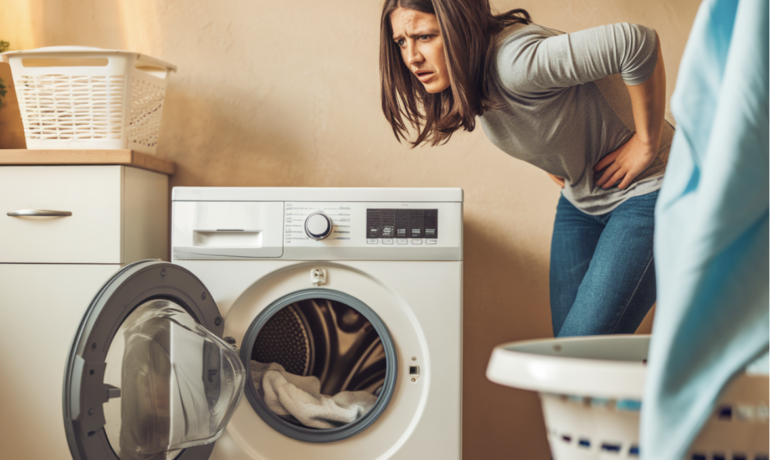Welcome to the ZapFixers Blog! Your iRobot Roomba is a game-changer for maintaining a clean home, but like all electronics, it requires proper care. At the heart of this cleaning marvel lies its battery—the powerhouse that keeps it moving efficiently. Over time, the Roomba’s battery will naturally degrade, causing shorter runtimes and reduced suction power. That’s where timely battery replacement makes all the difference.
In this detailed guide, we’ll walk you through how to recognize when your Roomba’s battery needs to be replaced, the benefits of replacement, and how to choose the right one. Let’s make sure your Roomba stays in peak condition to handle your cleaning needs!
Understanding the Roomba Battery
The Roomba battery is what allows this little robot to seamlessly navigate your home, powering both its wheels and suction motors. iRobot uses lithium-ion (Li-ion) or Nickel-Metal Hydride (NiMH) batteries, depending on the model. While lithium-ion batteries are lighter and have a longer lifespan, NiMH batteries are more affordable but wear down faster.
Every time your Roomba charges and runs, its battery undergoes natural wear and tear. Most Roomba batteries have a lifespan of 1-2 years, depending on how often you use it and how well it’s maintained. Recognizing the signs of battery deterioration early ensures your Roomba keeps working efficiently and saves you from costly repairs down the road.
Signs Your Roomba Battery Needs Replacement
Not sure if your Roomba’s battery is on its last legs? Here are clear indicators that it’s time for a replacement:
- Shorter Runtime:
- If your Roomba barely makes it through a small area before needing to recharge, the battery is no longer holding a proper charge.
- Takes Longer to Charge:
- A healthy battery should take around 2-3 hours to fully charge. If it’s taking much longer, your battery’s performance is degrading.
- Premature Docking:
- Your Roomba returns to the dock too early, leaving sections of your home unclean. This indicates the battery isn’t providing enough power to finish the job.
- Erratic Behavior:
- If the Roomba struggles to navigate, moves in circles, or stops frequently during a session, the battery may no longer support smooth operation.
- Reduced Suction Power:
- When a weak battery powers the Roomba, it can’t maintain optimal suction, resulting in less effective cleaning.
- Battery Age:
- If it’s been more than 2 years since your last battery replacement, it’s probably time for a new one, even if there are no obvious issues.
Why Replacing the Battery Matters
Ignoring battery issues can impact your Roomba’s performance and lead to unnecessary frustrations. Here are some of the key benefits of replacing the battery on time:
- Longer Runtime: A new battery allows the Roomba to clean larger areas in a single session without interruptions.
- Improved Cleaning Performance: With more power, your Roomba can maintain strong suction, picking up more dirt, dust, and pet hair.
- Faster Charging: A fresh battery charges efficiently, reducing downtime between sessions.
- Smooth Navigation: Roombas rely on battery power to detect obstacles and move effectively. Replacing the battery ensures it continues to navigate smoothly.
- Prolonged Device Lifespan: Regular maintenance, including battery replacement, reduces the chances of more costly repairs or early breakdowns.
How to Choose the Right Battery for Your Roomba
When it’s time to replace your Roomba battery, selecting the right one is essential. Not all batteries are created equal, and using the wrong type can compromise your Roomba’s performance. Here’s what you need to know:
- Identify Your Roomba Model:
- Roombas come in various models (600, 900 series, i3, j7, etc.), each requiring a specific battery type. Check your user manual or the original battery to confirm compatibility.
- Choose the Correct Battery Type:
- Lithium-ion (Li-ion): Lightweight, charges faster, and has a longer life. Recommended for more recent Roomba models.
- Nickel-Metal Hydride (NiMH): Cheaper but heavier. Common in older models.
- Opt for Authentic or Certified Replacements:
- While there are plenty of third-party options on the market, iRobot-certified batteries are recommended to ensure reliability and performance. Off-brand batteries may not deliver the same efficiency and could void your warranty.
- Check for Safety Features:
- Look for batteries with built-in overcharge protection and temperature control to ensure safe operation.
How to Replace Your Roomba Battery: Step-by-Step
If you’re comfortable with DIY tasks, replacing the battery is relatively easy. Here’s a quick guide:
- Turn off Your Roomba:
- Flip the power switch off to prevent accidental starts.
- Remove the Bottom Cover:
- Unscrew the screws securing the bottom cover and carefully lift it off.
- Take Out the Old Battery:
- You’ll find the battery compartment in the center. Lift the old battery out by pulling on the tabs.
- Insert the New Battery:
- Place the new battery into the compartment, ensuring it fits snugly.
- Replace the Bottom Cover:
- Secure the cover back with screws.
- Charge the Roomba:
- Place the Roomba on its dock and allow it to fully charge before running it.
Tips for Extending Battery Life
Here are some practical tips to maximize the lifespan of your Roomba’s new battery:
- Charge Regularly: Avoid letting the battery drain completely. Charge it as soon as it returns to the dock.
- Use the Roomba Frequently: Batteries degrade faster when left unused for long periods.
- Keep the Charging Dock Clean: Dust and debris can interfere with charging efficiency. Wipe the charging contacts regularly.
- Store in a Cool Place: Excess heat can reduce battery life. Avoid placing your Roomba near heat sources.
- Activate Vacation Mode: If you won’t use the Roomba for an extended time, remove the battery or place the Roomba in “vacation mode” (if available).
Conclusion
Your Roomba is designed to simplify home maintenance, but it’s only as good as its battery. Recognizing the signs of battery wear and replacing it on time keeps your cleaning companion running smoothly. With the right replacement battery, you can enjoy longer runtimes, better cleaning performance, and fewer interruptions.
Need help with installation or have questions about finding the perfect battery? ZapFixers is here to help! Whether you’re troubleshooting issues or need advice on replacement parts, our expert technicians have you covered.
Keep your Roomba in peak condition and enjoy hassle-free cleaning with minimal effort—because every home deserves spotless floors!
Need assistance? Contact ZapFixers today for professional appliance repair services and Roomba maintenance support!

